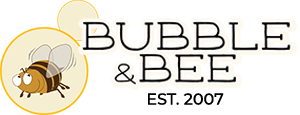What is Benzisothiazolinone?
What is Benzisothiazolinone?
 Benzisothiazolinone (BIT) is a widely-used synthetic preservative. Also known as 1,2-benzisothiazol-3(2H)-one, on an industrial level it's used as a biocide on buildings (to kill fungus on roofs and buildings). It's also used as a preservative in paints, cleaning products, wood varnish, printer ink, glues, and many other common household items.
Benzisothiazolinone (BIT) is a widely-used synthetic preservative. Also known as 1,2-benzisothiazol-3(2H)-one, on an industrial level it's used as a biocide on buildings (to kill fungus on roofs and buildings). It's also used as a preservative in paints, cleaning products, wood varnish, printer ink, glues, and many other common household items.
How is it made?
BIT is a synthetic preservative and is commonly made in three ways. The first involves reacting a primary amine with 2-halogenothiobenzoyl halide. A second method involves reacting 2-halogenothiobenzamide in the presence of acid or alkali. The third method is to heat 2,2'-dithio-bis-benzamides in the presence of a sodium hydroxide solution. (Source)
What are its risks?
- When used in air freshener products, benzisothiazolinone has been found to be cytotoxic to lung cells, creating free radical damage to these cells. (Source) It is also creates an inflammatory response in lungs, and can be an asthmatic trigger. (Source)
- Exposure to benzisothiazolinone can lead to allergic contact dermatitis and skin sensitization and must be limited to very low concentrations. (Source)
- The Scientific Committee on Consumer Safety (EU) has advised that it not be used in personal care items due to lack of data as well as its potential for skin sensitization. (Source)
- Animal studies have observed reproductive effects when administered orally at high doses. (Concentrations in household/personal care products are thought not to be high enough to have an effect on human reproduction, however.) (Source)
- Benzisothiazolinone has emerged as a common allergen, with cases increasing in recent years. (Source)
- Benzisothiazolinone will break down in UV light into 14 different chemicals, many of which are more toxic than the chemical itself. (Source)
- Individuals who are allergic to methylisothiazolinone may also be sensitive to BIT. (Source)
- BIT has not been studied for xenoestrogenic activity, however, its structure has the potential to be an endocrine disruptor, due to its benzene rings. Related chemicals methylisothiazolinone and octylisothiazolinone have been found to interfere with thyroid function in animal studies. (Source)
Recent Posts
-
Is Charcoal Safe in Deodorant?
Activated charcoal has become a popular natural ingredient in toothpaste, deodorant, soaps, facial c …5th Mar 2024 -
Is Stevia an Endocrine Disruptor?
Is Stevia an Endocrine Disruptor?Stevia rebaudiana, an herb native to Paraguay and Brazil, contains …9th Feb 2024 -
Is Aloe Vera Toxic?
Containing more than 200 different chemical compounds, aloe vera plants and extracts have long been …9th Feb 2024

